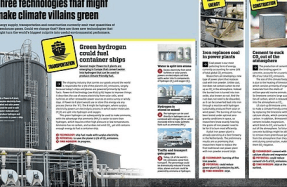



The evolution of species is driven by the competition to survive. This concept, defined by British naturalist Charles Darwin, still applies more than 150 years after he presented his findings. In modern human society, however, few of us compete to actually survive, so it is tempting to think that biological evolution for humans may have come to a halt. We will evolve instead via cultural and technological advances.
But no – indeed the opposite seems to be true. Anthropologist John Hawks from the University of Wisconsin-Madison in the US is one of many scientists who believe that our biological evolution today is around 100 times faster than when we rose to walk on two legs some four million years ago.
Natural selection has accelerated
In 2007 John Hawks completed a genetic analysis across very different population groups from Nigeria, the USA, Europe, Japan and China. All these groups evolved from a common ancestor over the past 200,000 years, so John Hawks could compare the genetic differences between populations and determine when those different changes took place. If a gene involved in the ability to digest milk, say, was found to exist in many different mutated versions in a population, he could conclude that the gene has not been through intensive natural selection, since poor mutations have not been weeded out to encourage a beneficial mutation.
John Hawks’ results demonstrated that whereas human genetic variation increased steadily towards the most recent ice age, it reduced significantly once we began growing crops some 5000-6000 years ago. On the other hand, natural human evolution has accelerated over the same period of time – and particularly over the past few thousand years. According to Hawks, this is also connected with farming, as the trend toward animal domestication made it increasingly desirable to be able to digest milk, for example, because humans started to breed cattle. At the same time people gathered in closer communities, increasing the risk of disease, so it has become an advantage to develop disease resistance via natural selection.
Some genes mutate more easily
Mutations are rare: the likelihood of a specific gene mutation in the lifetime of one person is one in 100,000. The chances of the mutation being beneficial are even lower. In a small population, then, evolution is very slow process.
But when




